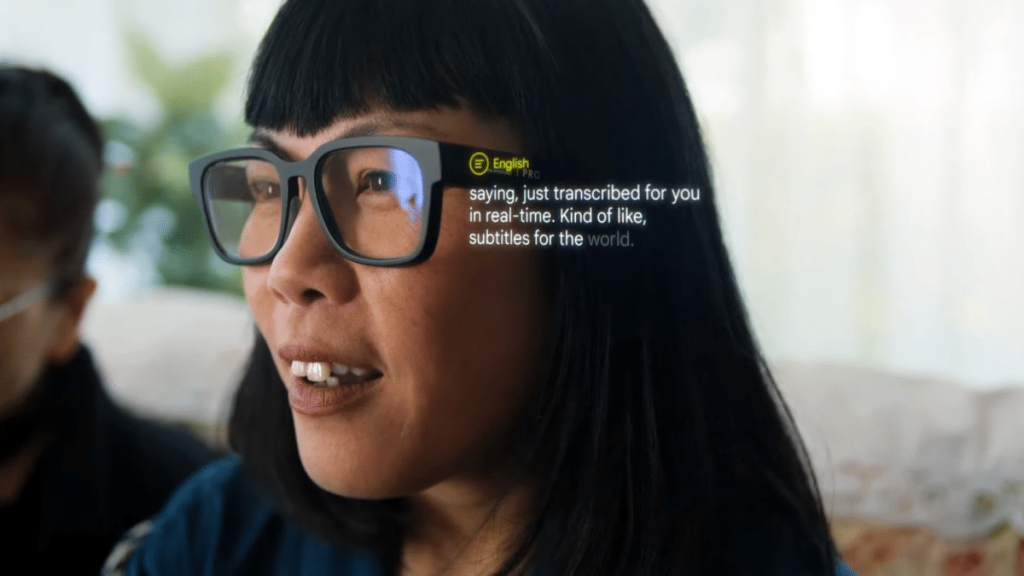Glasses that hear, recognize, translate if necessary and display the translation – Google is working on it. This was revealed by CEO Sundar Pichai at the end of the opening presentation (keyword) of Google I/O 2022. An elaborately designed video showed the augmented reality device, which was explicitly described as an early prototype.
“The magic of augmented reality becomes a reality when you can use it in the real world without technology getting in your way,” Pichai said at the Google I/O conference. Instead of people getting more and more immersed in their devices and paying less attention to their environment, he wants to develop technology that refocuses on real life.
“Let’s take language as an example. It’s very important to communicate with each other,” the manager explained, “but: understanding someone who speaks another language or continuing a conversation when you’re deaf can be a real challenge.” The appearance of the prototype reminiscent of the Google Glass device, which was first announced as a prototype ten years ago at the Google I/O 2012 conference.
Subtitles for real life
Pichai did not reveal the name of the current project. His goal is glasses that improve understanding between people in real life without losing eye contact or being distracted by sound output. The microcomputer hidden in the glasses hears what the other person is saying, recognizes what is being said, and converts it – for the hard of hearing and the deaf – directly into translations visible only to the person wearing the glasses.
PR video of a prototype of Google’s simultaneous translation glasses, shown at Google I/O 2022
Augmented Reality (AR) as written in books. In the case of language barriers due to different languages, the recognized language is translated into a language that eyeglass wearers can read and understand before being output as a subtitle. What is the unbelievable Universal Translator in Star Trek can come true as interpretation glasses.
Google’s PR video features some use cases: a mother and daughter who speak different languages, a deaf woman who can now read spoken conversations, and a bicycle mechanic who has many clients who speak English but do not speak the language. They all seem excited.
A long way
Pichai has not provided any technical information about the prototype. It remains to be seen that it will become a commercially available product. Google is working on several AR devices in parallel, which are usually kept under lock and key. Anyway, expectations are high after the presentation at Google I/O.
heise online gained initial experience with Google Glass in 2013; The sensation that same year was great when we couldn’t bring the first Google Glass to Germany. The public and many startups had expectations that Google Glass could not only meet their needs, but did not intend to meet. Searching for useful Google Glass apps has been tedious, and audio output via bone conduction or tiny earbuds has always been a weak point.
But the company has never given up on Google Glass. It can still bear fruit. It doesn’t hurt that bulky glasses are becoming fashionable.
(s)




More Stories
Nvidia GeForce RTX 4090: AIDA64 gets Ada spearhead support
Rogue Trader – Details about the first cRPG in the series – CD-Action
t3n – Digital Pioneers | digital business magazine